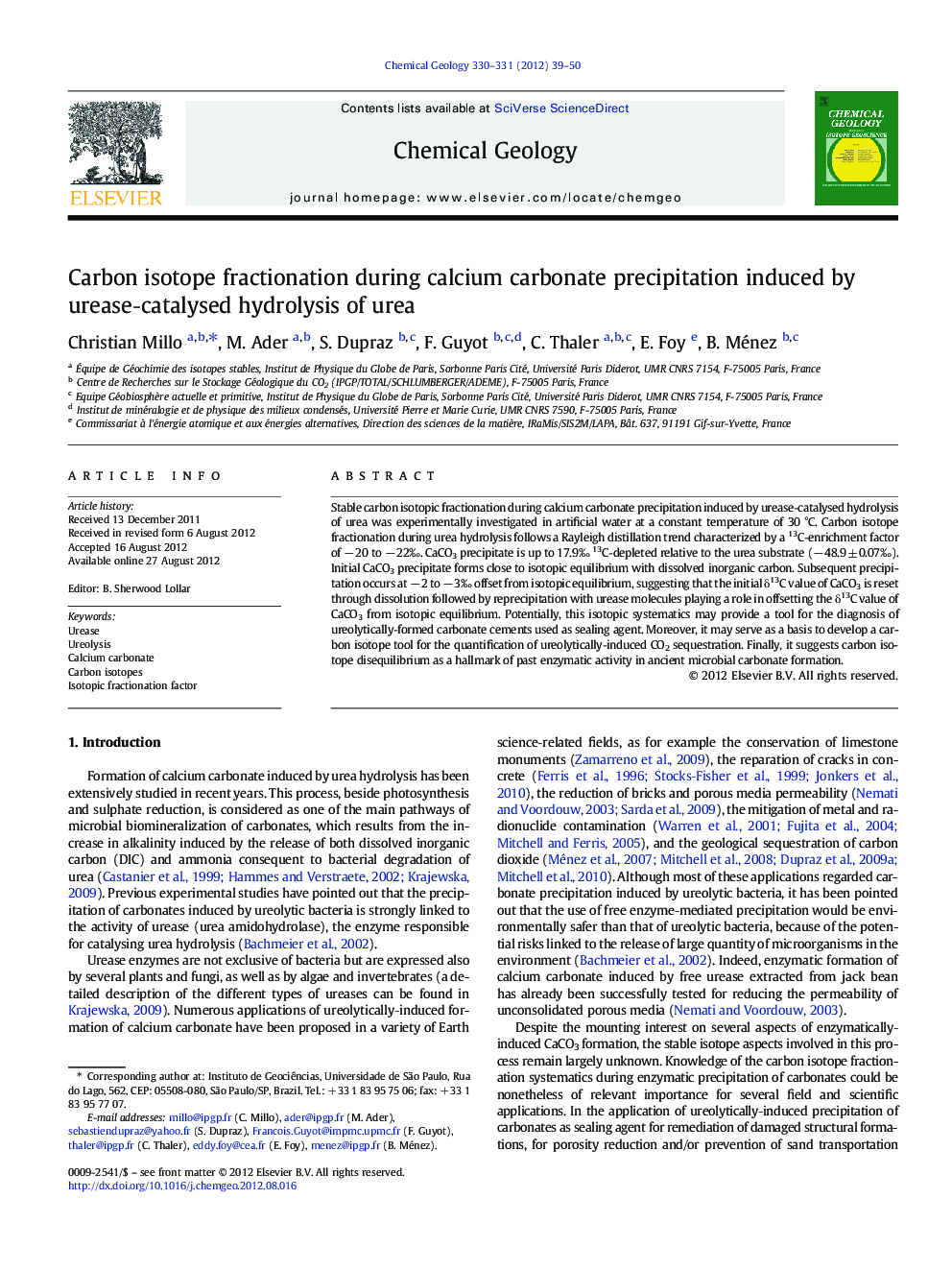| Article ID | Journal | Published Year | Pages | File Type |
|---|---|---|---|---|
| 4699235 | Chemical Geology | 2012 | 12 Pages |
Stable carbon isotopic fractionation during calcium carbonate precipitation induced by urease‐catalysed hydrolysis of urea was experimentally investigated in artificial water at a constant temperature of 30 °C. Carbon isotope fractionation during urea hydrolysis follows a Rayleigh distillation trend characterized by a 13C‐enrichment factor of − 20 to − 22‰. CaCO3 precipitate is up to 17.9‰ 13C‐depleted relative to the urea substrate (− 48.9 ± 0.07‰). Initial CaCO3 precipitate forms close to isotopic equilibrium with dissolved inorganic carbon. Subsequent precipitation occurs at − 2 to − 3‰ offset from isotopic equilibrium, suggesting that the initial δ13C value of CaCO3 is reset through dissolution followed by reprecipitation with urease molecules playing a role in offsetting the δ13C value of CaCO3 from isotopic equilibrium. Potentially, this isotopic systematics may provide a tool for the diagnosis of ureolytically‐formed carbonate cements used as sealing agent. Moreover, it may serve as a basis to develop a carbon isotope tool for the quantification of ureolytically‐induced CO2 sequestration. Finally, it suggests carbon isotope disequilibrium as a hallmark of past enzymatic activity in ancient microbial carbonate formation.
► A Rayleigh‐mode fractionation of 13C occurs during urease‐catalysed ureolysis. ► δ13C values of CaCO3 formed during ureolysis show isotopic disequilibrium with DIC. ► CaCO3 formed during ureolysis is 13C‐depleted relative to the urea substrate.
